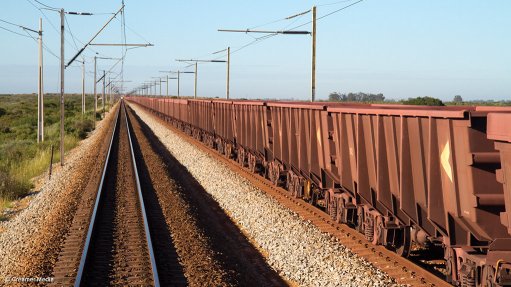Industrial symbiosis makes Vision 2030 viable
The National Cleaner Production Centre of South Africa (NCPC-SA), a division of the Council for Scientific and Industrial Research, tells Engineering News that its industrial symbiosis programme is a great contributor to the initiative to achieve zero waste to landfill by 2030 in South Africa.
The industrial symbiosis programme, which was successfully established and implemented in September 2014, is a resource efficiency programme where the unused or residual resources of one company are used by another company thus establishing a symbiotic relationship.
“Industrial symbiosis contributes to the zero waste to landfill vision as stipulated by government simply because a major target of the programme is landfill diversion,” says NCPC-SA industrial symbiosis project manager Henry Nuwarinda.
He adds that industrial symbiosis also drives resource efficiency in terms of energy consumption, water consumption and material usage.
“If a company applies the proper principles of industrial symbiosis, its use of resources will be more efficient and will result in less generated waste. Reducing waste from 100 t to 50 t over five years, for example, is already a contribution and you can set further goals to reduce waste, which is a drive towards zero waste.”
Nuwarinda mentions that South Africa will never entirely stop producing waste, hence, the importance of industrial symbiosis.
The NCPC-SA facilitates discussions between companies to initiate the successful exchange of waste materials. With project managers at regional and country level, relationships between companies can be developed and maintained.
“Industrial symbiosis is not limited to two companies rather NCPC-SA can facilitate the exchange of waste materials and the symbiotic relationship between multiple companies. Different companies may require different parts of a waste item and every part that is being used is, therefore, not sent to a landfill.”
Nuwarinda further states that the programme is based on the principles of relationship building between companies and voluntary participation. This ensures that more companies join the programme willingly, resulting in more successful implementation of the programme.
The programme is open to all companies and organisations, of all sizes, from all industries, and the primary mandate is to assist manufacturing and production companies in using its resources efficiently.
Nuwarinda informs that this is the primary aim of the NCPC-SA as part of the Department of Trade, Industry and Competition; however, the programme is not only limited or isolated to manufacturing and production companies.
“We do target industries; however, we have found that the programme works among individuals in terms of the expertise that one company can provide to another. By getting different companies together, we form symbiotic relationships through not only material or waste resources but also human resources,” Nuwarinda points out.
While materials are actually visible throughout the recycling, reusing and upcycling process, companies communicate with, and can provide services and expertise for, one another. While this might not be visible, it can be, through the facilitation of the NCPC-SA, a viable and easily accessible exchange of resources without the process of tenders.
Comments
Press Office
Announcements
What's On
Subscribe to improve your user experience...
Option 1 (equivalent of R125 a month):
Receive a weekly copy of Creamer Media's Engineering News & Mining Weekly magazine
(print copy for those in South Africa and e-magazine for those outside of South Africa)
Receive daily email newsletters
Access to full search results
Access archive of magazine back copies
Access to Projects in Progress
Access to ONE Research Report of your choice in PDF format
Option 2 (equivalent of R375 a month):
All benefits from Option 1
PLUS
Access to Creamer Media's Research Channel Africa for ALL Research Reports, in PDF format, on various industrial and mining sectors
including Electricity; Water; Energy Transition; Hydrogen; Roads, Rail and Ports; Coal; Gold; Platinum; Battery Metals; etc.
Already a subscriber?
Forgotten your password?
Receive weekly copy of Creamer Media's Engineering News & Mining Weekly magazine (print copy for those in South Africa and e-magazine for those outside of South Africa)
➕
Recieve daily email newsletters
➕
Access to full search results
➕
Access archive of magazine back copies
➕
Access to Projects in Progress
➕
Access to ONE Research Report of your choice in PDF format
RESEARCH CHANNEL AFRICA
R4500 (equivalent of R375 a month)
SUBSCRIBEAll benefits from Option 1
➕
Access to Creamer Media's Research Channel Africa for ALL Research Reports on various industrial and mining sectors, in PDF format, including on:
Electricity
➕
Water
➕
Energy Transition
➕
Hydrogen
➕
Roads, Rail and Ports
➕
Coal
➕
Gold
➕
Platinum
➕
Battery Metals
➕
etc.
Receive all benefits from Option 1 or Option 2 delivered to numerous people at your company
➕
Multiple User names and Passwords for simultaneous log-ins
➕
Intranet integration access to all in your organisation


















